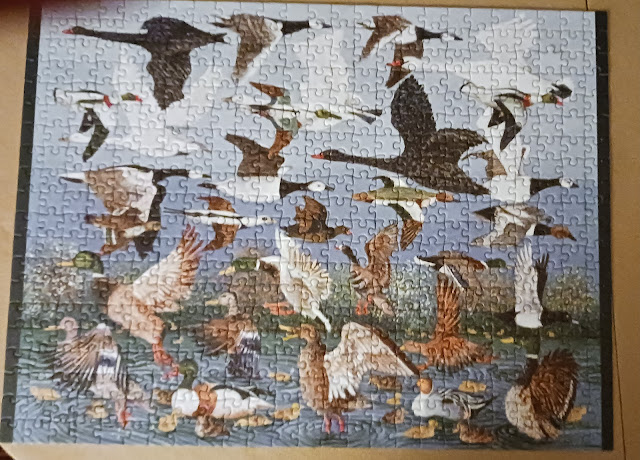The best thing about visiting a library in person is the serendipity.
Sure, it's easier to go online, pluck an e-book from the catalog, and read it from the comfort and convenience of your own home.
But, unless you already know what book you want to read or you just read your favorite authors over and over, you can miss a lot.
Case in point: Mr. Ginley and I were in the library last week, and he stumbled on a book called Lucky Cat, which he handed to me. "This looks like something you might like."
Well, me = cat lover, so of course, it was a good bet the book was going to be something up my alley. Also, the cat on the cover was pretty stinkin' cute. And it was a picture book, so minimal time invested. Its small size was also a factor because we had to shlep our books home on the Rapid.
What really intrigued me was the teaser on the back of the book that promised to "unlock the mystery and meaning" of "the paw-rocking maneki neko."
How have I reached Medicare-age and not known about maneki neko? I mean, sure I've seen them around, but I just thought they were adorbs. So I learned, and now so shall you. (Unless you bail at this point, which is your choice but also your loss.)
Let's start with the legend of how the maneki neko came to be. Well, that's the tricky part, because there's not a definitive answer. There are several legends. The earliest goes back to the 15th Century and a samurai warrior who was saved by a black cat, which led him to a hidden temple where he recovered from wounds sustained in battle and lived to fight another day.
Other tales involve a destitute widow, a 19th Century courtesan, and a friendly fishmonger. The story that has the most props, however, is the one about a poor monk whose Gotokuji Temple was crumbling away. His white cat was sitting at the temple gates one day when a storm came up. Li Naotaka, a mucky-muck, was passing by and took shelter under a nearby tree. The cat raised its paw to summon the feudal lord, who moved forward to see what was what. That's when lightening struck the tree he'd been standing under. Grateful to the cat for saving him from getting crushed/electrocuted, Li restored the temple. Today, hundreds of maneki neko can be found on the steps of the rescued temple.
As it turns out, the maneki neko has been depicted in many poses with various accessories, but most have these basic features:
- Raised paw: If the right paw is raised, it's meant to beckon happiness, fortune, and luck to your domicile. A raised left paw entices customers into a store, bringing the shopkeeper good fortune. If you have a cat with two paws up, you're probably trying to hedge your bets. (Or maybe you operate a business out of your home?)
- Coin: A koban is an oval-shaped gold coin that's a symbol of fortune. It's decorated with numbers in the millions (meaning big bucks) or messages that say things like "beckoning fortune."
- Charms: These modern additions include things like a magic wishing mallet, a prosperity carp, and a battle/farmer's gourd. Each charm is a symbol of good fortune.
- Colors: Maneki neko cats can be just about any color, but white seems to be the most prevalent. Each color has its own symbolism. White is a Shinto symbol of purity, black represents the paranormal, red is said to fend off evil and ensure good health, and gold is the cat to bring you money. But if you want the luckiest cat, you'll choose the calico, which enjoys a rich tradition in Japanese culture.
Well, I hope you've enjoyed this little jaunt with me. I have to go now. I've got to talk to my friend the Google to see where I can get my own maneki neko.
Sayōnara!
Photo attribution: While none is required, I believe in giving props: LeLaisserPasserA38, CC0, via Wikimedia Commons






